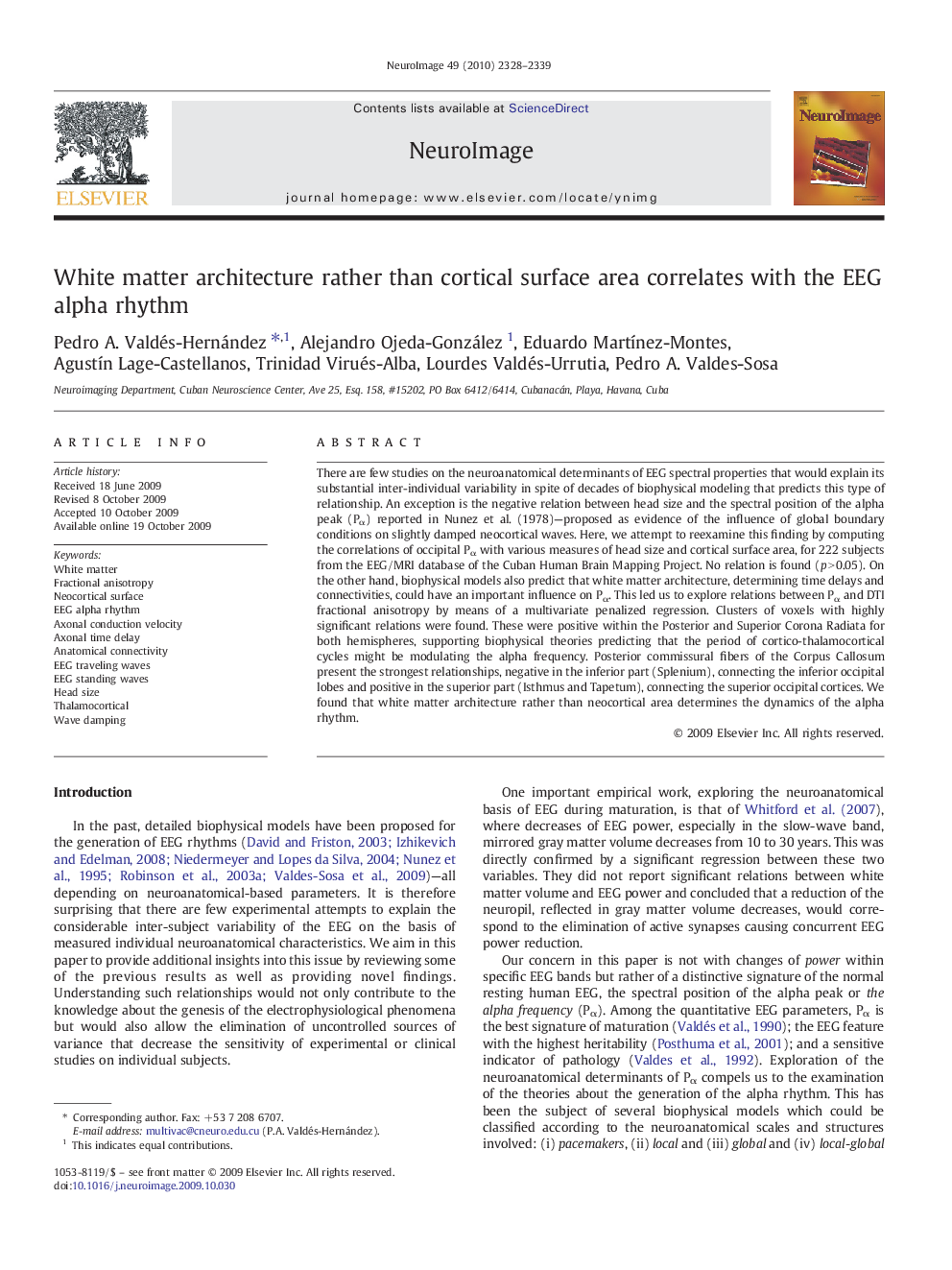| Article ID | Journal | Published Year | Pages | File Type |
|---|---|---|---|---|
| 6037049 | NeuroImage | 2010 | 12 Pages |
Abstract
There are few studies on the neuroanatomical determinants of EEG spectral properties that would explain its substantial inter-individual variability in spite of decades of biophysical modeling that predicts this type of relationship. An exception is the negative relation between head size and the spectral position of the alpha peak (Pα) reported in Nunez et al. (1978)-proposed as evidence of the influence of global boundary conditions on slightly damped neocortical waves. Here, we attempt to reexamine this finding by computing the correlations of occipital Pα with various measures of head size and cortical surface area, for 222 subjects from the EEG/MRI database of the Cuban Human Brain Mapping Project. No relation is found (p > 0.05). On the other hand, biophysical models also predict that white matter architecture, determining time delays and connectivities, could have an important influence on Pα. This led us to explore relations between Pα and DTI fractional anisotropy by means of a multivariate penalized regression. Clusters of voxels with highly significant relations were found. These were positive within the Posterior and Superior Corona Radiata for both hemispheres, supporting biophysical theories predicting that the period of cortico-thalamocortical cycles might be modulating the alpha frequency. Posterior commissural fibers of the Corpus Callosum present the strongest relationships, negative in the inferior part (Splenium), connecting the inferior occipital lobes and positive in the superior part (Isthmus and Tapetum), connecting the superior occipital cortices. We found that white matter architecture rather than neocortical area determines the dynamics of the alpha rhythm.
Keywords
Related Topics
Life Sciences
Neuroscience
Cognitive Neuroscience
Authors
Pedro A. Valdés-Hernández, Alejandro Ojeda-González, Eduardo MartÃnez-Montes, AgustÃn Lage-Castellanos, Trinidad Virués-Alba, Lourdes Valdés-Urrutia, Pedro A. Valdes-Sosa,
